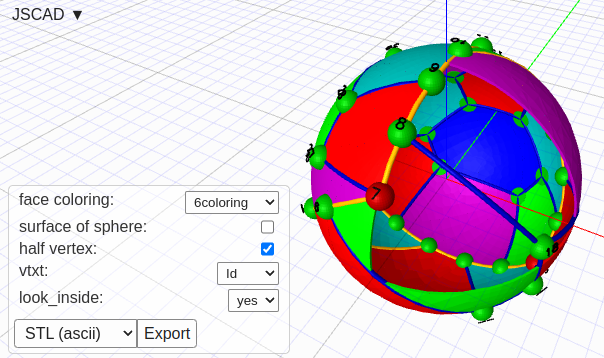@Hermann-SW if number of those utility spheres grows more, you could also see more benefits in jscad.app when creating a single sphere and placing it in different location via transform
const utilSphere = sphere(...)
// in loops or elswhere needed use translate
translate([x,y,z], utilSphere)
translate creates a new geometry object where mesh is the same but location info is different, and if not used in booleans, you can create many of them this way, even with high segment count, and jscad.app should use instancing optimisation of threejs and run it very fast.


You can verify my numbers.
I measured on Raspberry Pi5 with 64bit Raspberry PiOS (Debian based) 6s/12s refresh time for jscad.app/openjscad.xyz. I measured on Intel Celeron j4125 with 64bit Ubuntu 22.04 9s/18s refresh time for jscad.app/openjscad.xyz.
While jscad.app has other cool features, like base64 data uri (and will have base64 gzipped data uri) compared to openjscad.xyz, twice the rendering performance is a killer argument for jscad.app ...
Only real jscad.app issue for me is the brightness issue (compared to openjscad.xyz): https://github.com/hrgdavor/jscadui/issues/83